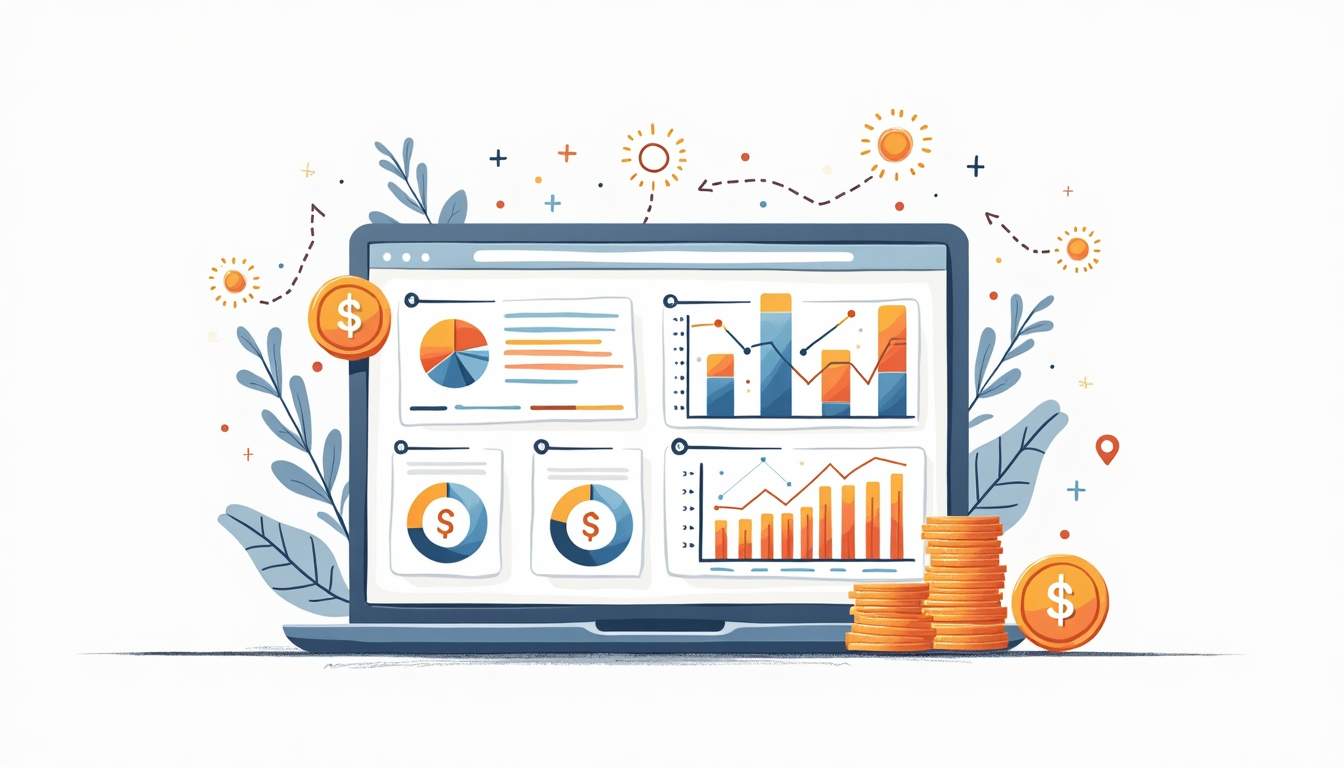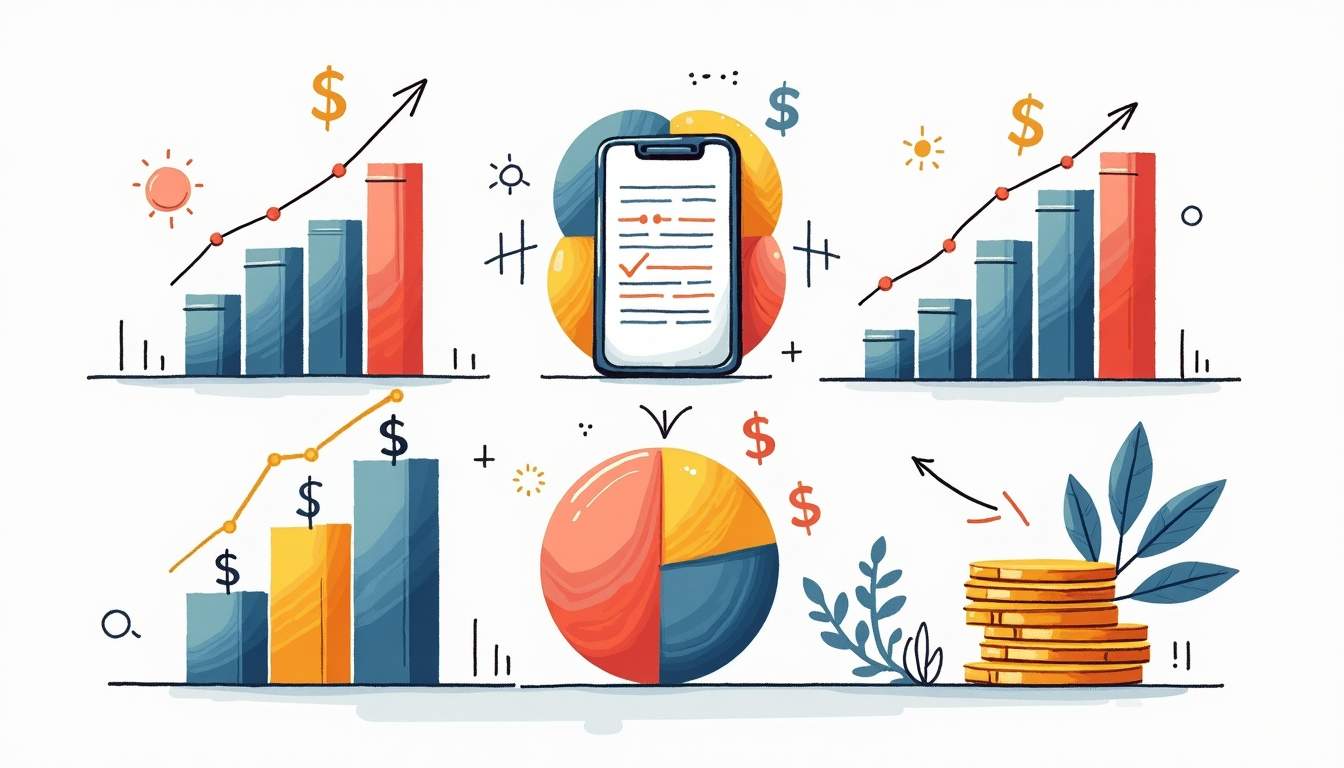Table of Contents
- Why a Thoughtful Budget Matters Right Now
- Step 1 — Define Clear, Measurable Goals
- Step 2 — Estimate How Much It Will Cost
- Step 3 — Adjust Estimates for Industry and Intent
- Step 4 — Choose a Budgeting Cadence: Daily vs Monthly
- Step 5 — Use Smart Bidding and Controls to Stretch the Budget
- Step 6 — Optimize Creative, Keywords, and Landing Pages
- Step 7 — Monitor KPIs and Reallocate Monthly
- How to Scale Without Losing Efficiency
- Budget Scenarios and Example Calculations
- Common Mistakes That Waste Budget
- Practical Tips to Stretch Every Dollar
- Tracking, Reporting, and Attribution
- Staying Agile: Review, Learn, Repeat
- Final Checklist Before Launch
- Closing Thoughts
Creating a practical, effective Google Ads budget in 2025 isn’t about picking a number out of a hat. With CPCs rising and conversion dynamics shifting, smarter budgeting means aligning goals, expected costs, and testing plans so every dollar works harder. This guide walks through realistic ways to set a budget, estimate outcomes, optimize spend, and adjust over time using current cost signals and straightforward math.
Why a Thoughtful Budget Matters Right Now
Advertising costs on Google have nudged up in recent years. The average cost per click (CPC) across industries sits at roughly $5.26 in 2025, an increase of about 13% year-over-year. That makes it easier to burn through a budget without seeing meaningful returns if campaigns aren’t tuned to performance and intent.
At the same time, average cost per lead (CPL) is around $70.11, meaning clicks alone won’t tell the whole story — conversion efficiency matters even more. Some industries face much higher CPCs (legal services near $8.58 per click), while others like arts and entertainment can be much cheaper (around $1.60 per click). Knowing these anchors helps set realistic expectations for results and testing.
Moreover, advertisers are facing increasing competition as more businesses shift their marketing dollars online. This heightened competition often leads to higher bids on high-intent keywords, making strategic allocation across different channels and audience segments essential. Businesses that invest time in robust audience research and leverage advanced targeting options tend to stretch their budgets further, yielding better-qualified leads.
It’s also crucial to consider the role of quality score and ad relevance; these factors not only impact ad position but can significantly reduce CPC. By optimizing ad copy, landing pages, and overall user experience, advertisers can enhance campaign performance and improve return on investment. Staying agile and continuously monitoring performance data enables quick adjustments, ensuring budgets are focused on the highest-performing elements of a campaign.
Step 1 — Define Clear, Measurable Goals
Before any budget is chosen, the objective must be crystal clear. Is the priority brand awareness, qualified leads, e-commerce sales, or app installs? Each goal requires different funnel times, bidding strategies, and budgeting rhythms.
For direct-response outcomes (leads or sales), set a target CPA (cost per acquisition) in dollar terms. For awareness or traffic, set target CPMs and expected engagement metrics. Define primary and secondary KPIs so the budget can be evaluated against the right outcomes.
Examples of Practical Goals
Examples: generate 100 qualified leads per month, acquire 50 sales at $40 cost per sale, or increase high-intent site visits by 30% over 90 days. Each example leads to a different budget calculation and bidding approach.
Step 2 — Estimate How Much It Will Cost
Start with industry averages and then refine using keyword-level research. The baseline CPC of $5.26 and CPL of $70.11 are useful cross-industry anchors, but the real cost depends on niche competition, keywords, and funnel conversion rates.
Use this simple approach: estimate how many conversions are needed to hit your goal, then work backwards from expected conversion rates to required clicks and from click volume to total spend.
Back-of-the-Envelope Calculation Template
1) Decide target conversions per month (e.g., 50 leads).
2) Estimate conversion rate on your landing page or funnel. Conservative starting points: 2–5% for cold search traffic, 8–20% for warm/remarketing, and 0.5–2% for display traffic.
3) Calculate required clicks = target conversions / conversion rate. Example: 50 leads / 4% = 1,250 clicks.
4) Multiply required clicks by estimated CPC. Example: 1,250 clicks × $5.26 = $6,575 monthly budget.
Step 3 — Adjust Estimates for Industry and Intent
Not all clicks are created equal. Search ads targeting high-intent keywords cost more but convert better; display or discovery campaigns cost less but usually convert at lower rates. For services with strong competition (legal, finance), the CPC might be closer to $8–10, so the budget should reflect that premium.
Segment budgets by intent: dedicate a higher share to search campaigns focused on buyer-intent keywords, a smaller share to awareness or remarketing, and reserve a test budget for discovery or video ads. That mix reduces waste and provides data across the funnel.
Example Mix for a B2B Lead Campaign
Allocate 60% to search (high-intent keywords), 25% to remarketing and display (mid-funnel engagement), and 15% to discovery or YouTube (top-of-funnel awareness and testing). Adjust as performance data arrives.
Step 4 — Choose a Budgeting Cadence: Daily vs Monthly
Google Ads allows a daily budget per campaign and monthly account-level planning is needed to keep fiscal control. For planning and reporting, use monthly budgets; for campaign management, set sensible daily budgets that support learning and conversion volume.
A daily budget that’s too low prevents campaigns and automated bidding from gathering enough data, while a budget that’s too high risks overspending on underperforming keywords. Start with a daily budget that supports at least 30–50 clicks per campaign per week when testing keywords and ads.
Practical Daily Budget Rule of Thumb
Determine desired monthly spend and divide by 30. Example: a $6,000 monthly plan equates to about $200/day across campaigns. Split that across priority campaigns so top-performing campaigns have enough daily spend to optimize.
Step 5 — Use Smart Bidding and Controls to Stretch the Budget
Automated bidding strategies like Target CPA or Max Conversions help make money go farther by optimizing bids in real time. Smart Bidding uses signals such as device, location, time, and audience to bid higher when conversion probability is high and lower when it’s not.

It’s important, though, to give Smart Bidding enough conversion data to learn. If conversion volume is low, use manual CPC or Enhanced CPC until there’s sufficient data, or increase sample size by widening keyword match types or raising budget temporarily to speed learning.
When to Use Target CPA vs Max Conversions
Use Target CPA when a specific cost per acquisition is necessary and historical conversion data exists. Use Max Conversions for early-stage campaigns where the priority is to maximize learning and raw conversion volume under a budget cap.
Step 6 — Optimize Creative, Keywords, and Landing Pages
Quality Score remains powerful. Improving ad relevance, expected CTR, and landing page experience reduces CPCs. Allocate time and budget early to test ad copy, headlines, and landing page variants so the account isn’t paying a premium for poor-performing assets.

Negative keywords save budget by stopping irrelevant traffic. Regularly add irrelevant queries found in search terms to keep costs focused on converting intent. Ad extensions boost visibility and CTR without increasing CPC directly, and they also help Quality Score.
Simple Priorities for Early Optimization
1) Test 3–4 ad variations per ad group (headlines, value props).
2) Implement at least sitelink and callout extensions where relevant.
3) Audit landing page load speed and clear conversion paths — even small improvements can lift conversion rates by several percentage points.
Step 7 — Monitor KPIs and Reallocate Monthly
Track spend, impressions, clicks, CTR, CPC, conversions, conversion rate, CPL, and ROAS (for e-commerce). Evaluate performance both at campaign and keyword levels. Shift budget to campaigns and keywords hitting target CPAs or showing positive ROAS, and pause or cut spend on underperformers.
Don’t overreact to short-term volatility. Look for trends over 14–30 day windows, unless there’s an obvious technical issue or conversion tracking problem that needs immediate fixing.
What to Watch Closely in the First 90 Days
Conversion rate trends (is it improving as ads and pages are refined), cost per conversion trajectory, and search terms quality. Also, check attribution and data freshness—if first-click or cross-device conversions are being missed, adjust attribution windows to reflect reality.
How to Scale Without Losing Efficiency
Scaling should be incremental. Increase budgets on winning campaigns by 10–25% and monitor performance for 7–14 days. Large sudden increases can trigger bid automation to overshoot or enter less efficient auction segments.
Introduce new keywords and match types slowly, and diversify into adjacent channels (video, discovery, Performance Max) only after search campaigns are stable. Performance Max can be a powerful scaler, but it should be introduced with clear expectations and close monitoring.
Guardrails for Responsible Scaling
Keep target CPA thresholds visible and use portfolio bidding where appropriate so that campaign groups learn collectively. Maintain a reserve for experimentation so scaling doesn’t consume the testing budget.
Budget Scenarios and Example Calculations
Examples help make the abstract concrete. Below are three hypothetical but realistic monthly budgets and how they might be broken down for a small business, a mid-size lead gen team, and a scaling e-commerce shop.

Small Local Service Business — $2,000/month
Assumptions: high-intent local keywords, CPC $6.00, landing page conv. rate 6%.
Required clicks for 30 leads = 30 / 0.06 = 500 clicks. Spend = 500 × $6 = $3,000 (so either reduce lead target to ~20 leads or raise budget). Realistic adjustment: target 20 leads = 333 clicks = $2,000. Allocate 75% to search, 15% to remarketing, 10% to testing.
Mid-Size B2B Lead Gen — $8,000/month
Assumptions: CPC $7.00, landing page conv. rate 4%, target leads 120/month.
Clicks required = 120 / 0.04 = 3,000 clicks. Spend = 3,000 × $7 = $21,000. With an $8,000 budget, reduce targets or improve conversion rate. If conversion rate can be raised to 8% via landing page and funnel tweaks: clicks needed = 120 / 0.08 = 1,500 × $7 = $10,500 — still above $8,000 but much closer. Shows how small improvements in conversion rate dramatically reduce required spend.
Growing E-commerce Brand — $20,000/month
Assumptions: mixed search and shopping traffic, average CPC $3.50, target ROAS 400%.
Split: 60% to Shopping and Search (product intent), 20% to remarketing, 20% to video/awareness. Careful feeding of product data, smart bidding, and strong creatives are necessary. With an average order value of $75 and target ROAS 4x, allowed CPA = $75 / 4 = $18. If avg CPC = $3.50 and conversion rate = 5%, CPA = $70 (too high); improving product page CVR to 10% reduces CPA to $35; additional optimizations and audience targeting can bring CPA to acceptable levels.
Common Mistakes That Waste Budget
Some recurring budget mistakes include: not aligning objectives and KPI definitions, setting daily budgets too low for learning, neglecting negative keywords, failing to improve landing pages, and cutting budgets prematurely without allowing test cycles to complete.
Another common issue is misreading attribution—overcrediting last-click channels that may simply close the loop while other channels are doing top-of-funnel work. Ensure attribution windows and models match business buying cycles.
Practical Tips to Stretch Every Dollar
– Prioritize high-intent search keywords and long-tail phrases that convert cheaper due to specificity. – Use negative keywords aggressively to filter irrelevant searches. – Leverage ad extensions for free visibility boosts. – Test landing page improvements that can lift conversion rates by even a few percentage points. – Try bid adjustments by time, device, and location to concentrate spend where conversion likelihood is higher.
Low-Budget Hacks That Deliver
Retargeting lists are often low-cost, high-conversion channels. Set up audience segments for recent site visitors and abandoned-cart users and give them a modest, higher-bid allocation. Use Local Service Ads or call-only campaigns if phone leads are high value and convert quickly.
Tracking, Reporting, and Attribution
Accurate tracking is non-negotiable. Set up conversion tracking, connect Google Analytics and Ads, and validate events regularly. Consider server-side tagging or enhanced conversions if cookie tracking has gaps. Without reliable conversion data, automated bidding and budget decisions will be built on sand.
Choose an attribution model that reflects the sales cycle. For short buying cycles, last-click can be informative; for longer B2B sales, consider data-driven or position-based models that credit multiple touchpoints.
Staying Agile: Review, Learn, Repeat
Budgets shouldn’t be locked in forever. Review performance monthly and make incremental adjustments based on clear evidence: rising CPCs in a keyword, falling conversion rates, or new competitive entrants. Keep a small ongoing test budget (5–15%) to experiment with new tactics and placements.
Staying informed about broader trends—like the current average CPC of $5.26 and rising CPLs—helps avoid surprises and sets sensible guardrails for bids and CPA targets.
Final Checklist Before Launch
– Goal and target CPA/ROAS defined. – Estimated monthly clicks and spend calculated from conversion rate assumptions. – Campaign mix (search/remarketing/display/video) allocated. – Tracking and conversions validated across devices. – Negative keyword lists created and initial ad variants ready. – Landing pages optimized for speed and clarity. – Testing plan and budget ramp-up timeline in place.
With this checklist, campaigns are more likely to start learning quickly and spend budget in ways that produce measurable results rather than guesswork.
Closing Thoughts
Setting a Google Ads budget in 2025 is a balance between understanding rising costs and making targeted efficiency improvements. The average CPC and CPL provide benchmarks, but the real levers are conversion rate improvements, strong intent targeting, and disciplined testing. By starting with clear goals, doing the math, and iterating based on data, budgets can be both realistic and growth-oriented.
Small changes—improving landing page conversion by a few percentage points, refining keyword lists, or applying Smart Bidding correctly—often yield far more impact than simply increasing budgets. Use the numbers as a guide, prioritize high-intent traffic, monitor performance closely, and let results determine where to scale.




